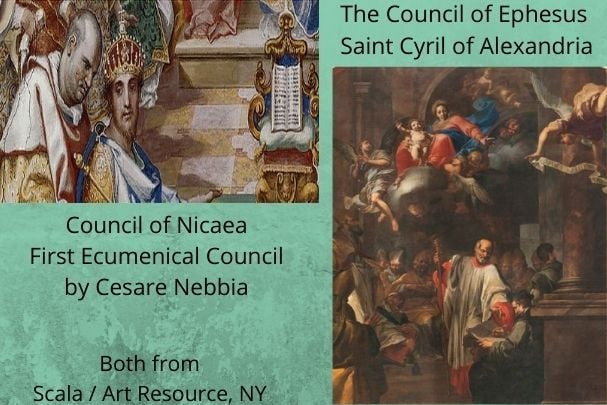This article first appeared in the Christian Research Journal, volume 43, number 03 (2020). For further information about the Christian Research Journal please click here.
The word “orthodoxy” has two primary meanings. The first involves truth. The second involves life. As such, Eastern Orthodoxy — or simply Orthodoxy with a capital “O” — embodies the maxim: Truth matters, Life matters more.
Vladimir Lossky said it best: “Outside the truth kept by the whole Church personal experience would be deprived of all certainty, of all objectivity. It would be a mingling of truth and falsehood, of reality and of illusion.”1 There can be no life without truth, but above all, no truth without life. The life that matters more is a realm largely inaccessible to human apprehensions of truth. It involves a mysterium that is to be experienced rather than explained. While the divine incomprehensibility of the life that matters more is not a prohibition upon knowledge, it is the transcending of knowledge. The transcending of all philosophical speculation. “Christian theology is always in the last resort a means: a unity of knowledge subserving an end which transcends all knowledge. This ultimate end is union with God or deification.”2
All attempts to understand Orthodoxy from a solely rational perspective remain partial and inadequate. As contrast is the conduit to clarity, I think it fair to note that while much of Western theology is focused on judicial redemption, Eastern Orthodoxy is focused on union with God. Rightly understood, the life that matters more entails participation in the kingdom of God — likened by Jesus to “treasure hidden in a field. When a man found it, he hid it again, and then in his joy went and sold all he had and bought that field. Again, the kingdom of heaven is like a merchant looking for fine pearls. When he found one of greatest value, he went away and sold everything he had and bought it.”3 That treasure is divine life in union with Christ.
In contrast to the gnostic, for whom knowledge is an end in itself, knowledge within Orthodoxy is the means by which to experience a life transcendent to truth. As such, Orthodoxy has safeguarded for its posterity the centrality of union with God as its universal objective. And to this end, Orthodoxy is rightly described as the Church of the Seven Ecumenical Councils.
Nicaea I. In the first Ecumenical Council, the Council of Nicaea (325), the church affirmed — against the Alexandrian priest Arius — “the dogma of the consubstantial Trinity; for it is the Word, the Logos, who opens to us the way to union with the Godhead; and if the incarnate Word has not the same substance with the Father, if he be not truly God, our deification is impossible.”4
Constantinople I. In the second Ecumenical Council, the Council of Constantinople (381), the church affirmed — against Macedonius, the Arian bishop of Constantinople — the equality and single essence of God the Holy Spirit with God the Father and God the Son. For if the Holy Spirit, as Macedonius contended, is a created power, and therefore subservient to God the Father and God the Son, our deification is rendered moot. Why? Because the “doer” in deification is the Holy Spirit with whom deified humanity joins its will so as to experience union with God. In addition to its significance respecting deification, the Council of Constantinople supplemented Nicaea with five articles in which are set forth the theology concerning the Holy Spirit, the church, the mysteries, the resurrection of the dead, and the life of the age to come. As such, the first two Ecumenical Councils formulated the Niceno-Constantinopolitan Creed, which serves as a template to the church for what “has been believed everywhere, always, and by all.”5
Ephesus. In the third Ecumenical Council, the Council of Ephesus (431), the church affirmed — against Nestorius, archbishop of Constantinople — that the Virgin Mary is, and forever will be, Theotokos — bearer of God — as opposed to the heretical notion that she was merely Christotokos — bearer of Christ, a man in whom God dwelled as if in a temple. The council affirmed the apostolic truth that Jesus is true God and true Man. And that, therefore, the Virgin Mary is truly Theotokos, the Mother of God. For if Christ were not truly the God–man, we could not become gods by grace — “God in life and in nature, but not in the Godhead.”6
Chalcedon. In the fourth Ecumenical Council, the Council of Chalcedon (451), the church affirmed — against Eutyches, abbot of a monastery outside Constantinople — that Christ is one person with two natures in opposition to the heresy that the human nature of Christ was swallowed up by the divine nature “like a drop of wine in the sea.”7 As such, the church “rose up against” the “Monophysites [‘one nature’] to show that, since the fullness of true human nature has been assumed by the Word, it is our whole humanity that must enter into union with God.”8
Constantinople II. In the fifth Ecumenical Council, the Council of Constantinople II (553), the church reaffirmed — against Nestorius and Eutyches — that Christ is forever one person with two natures. For if, in incarnation, Christ did not take on our humanity, we could not attain to the great and glorious promise of participating in the divine nature (see 2 Pet. 1:4). Moreover, in concert with the first four councils, the Council of Constantinople II ratified the Trinitarian and Christological creeds that are yet regarded as normative by the major Christian confessions of both East and West. Even today — especially today — we may well say in concert with St. Gregory the Great: “Just as the four books of the holy gospel, so also I confess to receive and venerate four councils.”9
Constantinople III. In the sixth Ecumenical Council, the Council of Constantinople III (680), the church affirmed — against Sergius, Ecumenical Patriarch of Constantinople — that Christ has two wills, the human will freely subject to the divine will. The church resisted the Monothelites (one will) “because, apart from the union of the two wills, divine and human, there could be no attaining to deification — ‘God created man by His will alone, but He cannot save him without the co-operation of the human will.’”10
Nicaea II. In the seventh and last of the great Ecumenical Councils, the Council of Nicaea II (787), the church affirmed — against Byzantine Emperor Leo III and the iconoclasts (icon-smashers) — that far from violating the second commandment, icons are “the expression through a material medium of the divine realities — symbol and pledge of our sanctification.”11 The Second Council of Nicaea convened by Empress Irene (widow of Emperor Leo IV, grandson of Leo III) not only exonerated iconodules (venerators of icons) but afforded icons their rightful place as windows into another world. A world of Christ and the cross. A world of saints and martyrs. An iconographic world of those deified by graces dispensed within the spiritual gymnasium, which is the body of Christ. As with other heresies condemned by the councils, the iconoclastic heresy exposed a false christology. For the invisible Word, who took on flesh, also sanctified visible realities — iconographic images of “the faith once for all entrusted to the saints.”12
The Orthodox Fathers of the Seven Ecumenical Councils never lost sight of our union with God. Under the guidance of the Holy Spirit they testified to the transcendence of Trinitarian and Christological truths — in harmony with the Scripture, and as they themselves had received them through Apostolic Tradition. Their authority was grounded in the church of the living God — “The pillar and foundation of the truth.”13
The Divine Liturgy is the sacred rite by which Orthodoxy celebrates the mystery of the Eucharist. The liturgy is composed of two parts — the Liturgy of the Word and the Liturgy of the worshipers. “The Liturgy of the Word in its basic, classical shape is a Christianized version of the synagogue service focusing on the reading of a biblical passage and the homily. The Eucharist on the other hand is derived from the words and actions of the Lord at the Mystical (Last) Supper.”14 By it the Orthodox community is changed from human multiplicity to one body in Christ. Within the eucharistic assembly, the church, “divine life flows into us and penetrates the fabric of our humanity.”15 Thus, Ignatius of Antioch christened the Eucharist our “medicine of immortality.”16
The Eastern Orthodox Church17 is thus the center of Orthodoxy. It is “the sphere within which union with God takes place in this present life, the union which will be consummated in the age to come, after the resurrection of the dead.”18 It is the reincarnation of Eden. The place in which you and I may access the Tree of Life replete with its eucharistic bounty. A bounty by which our nature is unified with Christ and with other Christians.—Hank Hanegraaff
Hank Hanegraaff serves as president of the Christian Research Institute and host of the Bible Answer Man broadcast and the Hank Unplugged podcast. He is author of more than twenty books, including Truth Matters, Life Matters More: The Unexpected Beauty of an Authentic Christian Life (W Publishing Group, 2019), from which this article is adapted.
NOTES
- Vladimir Lossky, The Mystical Theology of the Eastern Church, trans. Fellowship of St. Alban and St. Sergius (1976; repr., Crestwood, NY: St. Vladimir’s Seminary Press, 2002), 9.
- Lossky, Mystical Theology, 9.
- Matthew 13:44–46, unless otherwise noted, Scripture quotations are from NIV.
- Lossky, Mystical Theology, 10.
- Vincent of Lerins, Commonitorium
- Witness Lee, Life-Study of Job, Psalms Part 1 (Anaheim: Living Stream Ministry, 1996), 122.
- See Donald Fairbairn and Ryan M. Reeves, The Story of Creeds and Confessions: Tracing the Development of the Christian Faith (Grand Rapids, MI: Baker Academic, 2019), 98–102.
- Lossky, Mystical Theology, 10.
- Gregory the Great (c. 540–c. 604), Epistle to John, Bishop of Constantinople, and the other Patriarchs, quoted in Archbishop Peter L’Huillier, The Church of the Ancient Councils (Creswood, NY: St. Vladimir’s Seminary Press, 2000), ix.
- Lossky, Mystical Theology, 10.
- Lossky, Mystical Theology, 10.
- Jude 3, my paraphrase.
- 1 Timothy 3:15.
- Alkiviades Calivas, “An Introduction to the Divine Liturgy,” in The Divine Liturgy of Saint John Chrysostom, 3rd ed., trans. Members of the Faculty of Hellenic College/Holy Cross Greek Orthodox School of Theology (Brookline, MA: Holy Cross Orthodox Press, 1985), xiv.
- Calivas, “An Introduction to the Divine Liturgy,” xxiii.
- Ignatius, Epistle to the Ephesians, 20.
- Communion of autocephalous (“self-headed”) churches.
- Lossky, Mystical Theology, 179.









